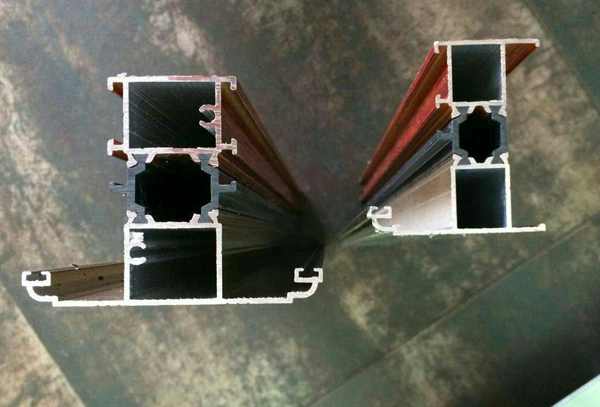Knowledge of aluminum profile classification
Posted time:2019-05-16 Page View:4315Classification methods of aluminum profiles:

One, according to the use can be divided into the following categories:
1. Aluminum profiles for building doors and Windows (divided into doors and Windows and curtain walls).
2. Aluminum profile for CPU radiator
3 aluminum alloy shelf aluminum profile, their difference lies in the different shape of the section. But they're all produced by hot melt extrusion.
Two, according to the alloy classification:
Jiange high compartment aluminum factory teacher said, aluminum profile can be divided into 1024, 2011, 6063, 6061, 6082, 7075 and other alloy grades of aluminum profile, 6 of the most common. The difference between different grades is that the ratio of various metal components is not the same, in addition to the commonly used doors and Windows aluminum profile such as 60 series, 70 series, 80 series, 90 series, curtain wall series and other building aluminum profile, industrial aluminum profile has no clear model distinction, most manufacturers are processed in accordance with the actual drawings of customers.
III. Classification according to surface treatment requirements:
1. Anodized aluminum
2. Electrophoretic coating of aluminum
3. Powder spray aluminum
4. Wood grain transfer to aluminum
5. Planing aluminum (divided into mechanical planing and chemical polishing, of which chemical polishing costs the most and the most expensive)
Aluminum profile production process :]
Mainly includes casting, extrusion and color (color mainly includes: oxidation, electrophoresis coating, fluorocarbon spraying, powder spraying, wood grain transfer printing, etc.) three processes.
1. Melting and casting is the first process of aluminum production.
The main process is as follows:
(1) Ingredients: according to the specific alloy grades that need to be produced, calculate the addition amount of various alloy components, and reasonably match various raw materials.
(2) Melting: add the raw materials to the melting furnace to melt according to the process requirements, and effectively remove the miscellaneous slag and gas in the melt by means of degassing and slag removal refining.
(3) casting: molten aluminum in a certain casting process conditions, through the deep well casting system, cooling casting into various specifications of the round casting rod.
2. Extrusion:
Extrusion is the means of profile forming. According to the section of the profile product, the mold is designed and manufactured, and the heated round casting rod is extruded from the mold by the extruder. The commonly used grade 6063 alloy also uses an air-cooled quenching process and the artificial aging process after the extrusion to complete the heat treatment strengthening. Different grades of heat treatable hardening alloys have different heat treatment systems.
3, color (here mainly talk about the process of oxidation)
Oxidation: the extruded aluminum alloy profile, its surface corrosion resistance is not strong, must be processed through anodic oxidation to increase the corrosion resistance, wear resistance and appearance of the aluminum. Jiange high compartment aluminum profile factory production of high compartment aluminum profile is almost all oxidized.
The main process is as follows:
(1) surface pretreatment: the surface of the profile is cleaned by chemical or physical methods, and the pure matrix is exposed to facilitate the acquisition of complete and compact artificial oxide film. Specular or matte (matte) surfaces can also be mechanically obtained.
(2) Anodic oxidation: After surface pretreatment of profiles, under certain technological conditions, the substrate surface is anodized to form a layer of dense, porous and strong adsorption Al203 film.
(3) sealing hole: the pore of the porous oxide film generated after anodic oxidation is closed, so that the oxidation film pollution prevention, corrosion resistance and wear resistance are enhanced. Oxide film is colorless and transparent, using the strong adsorption of the oxide film before sealing the hole, adsorption and deposition of some metal salts in the film hole, can make the appearance of the profile show natural color (silvery white) outside many colors, such as: black, bronze, gold and stainless steel color.
